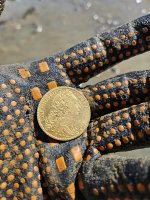pcolaboy
Hero Member
Some quite astounding deviations in accuracy of published Lat and Long from 1796 can be observed by checking out page 128 of the document at this link. (you have to have Adobe Acrobat Reader installed).
http://docs.lib.noaa.gov/rescue/csc/102_pdf/CSC-0011.PDF
On the dozen or so that I've punched into my charting program, they're almost all off on the longitude by a dozen miles or more. What gives?
http://docs.lib.noaa.gov/rescue/csc/102_pdf/CSC-0011.PDF
On the dozen or so that I've punched into my charting program, they're almost all off on the longitude by a dozen miles or more. What gives?



